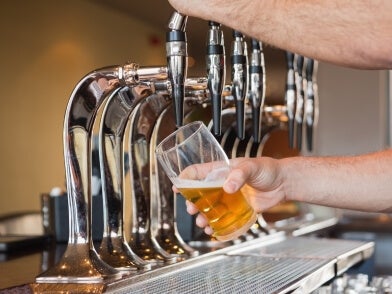Signs of optimism for Aberdeen's licensed trade
Associate Director Stuart Drysdale relives his student days in Aberdeen, and tells us why things are looking positive for the city's licensed trade.
Business. Built around You.
Your expert business property advisers

Aberdeen has changed immeasurably since I moved there as a student in 1998.
Many of the numbers are well known. Aberdeen is Scotland’s third largest city with a population of over 200,000 and a catchment over 500,000. The city thrived through years when recession was biting hard across the country, with Aberdeen refusing to let the general economic slowdown affect its leisure market as oil prices surged to over $126 a barrel in March 2012. The buoyancy in the offshore trade was reflected within the city and outlying areas, and food and drink sales were strong for many years during a time when the rest of the country was struggling to retain the status quo on turnover and profit levels. Aberdeen recorded a food-led outlet growth of 33% between 2010 and 2015 with a small wet-led pub decline, similar to the rest of the country, of 8.3%.
In January 2016, the oil price slumped to $28 a barrel and there was nothing but pessimism across all market sectors in the region. Since then there has been a mild recovery and at the time of writing this piece the oil price has recovered somewhat to $50 a barrel. However, there remains a nervousness in the city and general north east region.
Oil and gas companies have slashed their workforce numbers in an effort to counter falling sales figures, which has had a negative effect on hotel occupancy figures in recent times. The Average Room Rate (ARR) in 2015 was over £92 and for 2016 that figure has dropped to under £60 in the city. 100% occupancy figures were commonplace in the city on weeknights, which generated good business for outlying towns to cater for the demand, although now the city centre hotels have dropped their room rates to such a level that periphery towns have suffered the most from a lack of clientele. This reduction in corporate spend has obviously had a knock-on effect on the pub and restaurant sectors.
Almost 30,000 people in Aberdeen are students, studying at the two major universities, and according to a number of local operators, weekday trade is also down, which was historically what supplemented the good weekend trade, fuelled by the booming oil and gas industry and young individuals with plenty of disposable income to enjoy their weekends.
Despite the general negative press coverage for the region, there are some signs of optimism in the city for the licensed trade. A new cocktail bar has opened in the Pizza Hut in Union Square after a £400k refurbishment. Brewdog opened their second site in Aberdeen last year, a flagship site on Union Street, and smaller independent breweries such as 6 degrees North are flourishing on the back of the craft beer trend. The Boozy Cow, a charitable venture set up by Gareth Wood’s Speratus Group has recently opened in Langstane Place and Revolution Bars, owned by Inventive Leisure, have plans for a Revolucion de Cuba in The Academy Shopping Centre, with a £1.4 million development planned for the former Wagamama restaurant, which will provide a venue to hold 550 people.
It would be a brave economist to predict exactly when the market will recover fully, although what is certain is that Aberdeen still has an exciting and innovative licensed trade sector. There will be numerous opportunities that present themselves as the market evolves and many leaving the Oil and Gas trade may consider a career path in the licensed trade, with bargains to be had and deals to be done in both the leasehold and freehold markets.